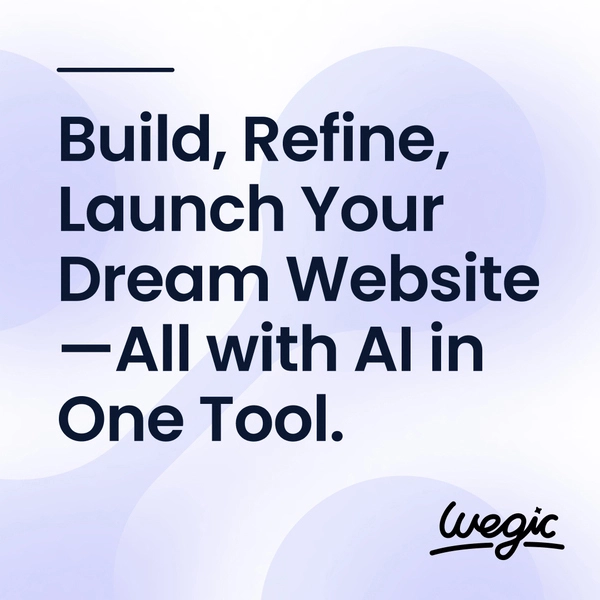Framer Website Builder Solutions
Framer Website Builder in 3 Steps
Framer Website Builder
In today’s digital age, having a strong online presence is essential for businesses to thrive. One of the key aspects of this is ensuring that your website is ranking well on search engine results pages (SERPs). Website ranking checkers are crucial tools that can help you track how your website is performing in search engines, such as Google, Bing, and Yahoo. In this article, we will delve into the importance of website ranking checkers and how they can help businesses improve their online visibility.

Framer Website Builder in 3 Steps
Framer Website Builder
When it comes to choosing a website builder, cost is a major factor to consider. While some platforms can cost hundreds of dollars per month, there are also cheaper options available that provide all the essential tools needed to create a professional-looking website. In this article, we will discuss some of the cheapest website builders on the market and explore their features and pricing options.
Wix is one of the most popular and affordable website builders available today. With plans starting at just $14 per month, Wix offers a user-friendly interface and a wide range of customization options. Users can choose from hundreds of templates, add features such as e-commerce functionality and social media integration, and even create a mobile-friendly version of their site. Wix also offers a free plan that includes Wix branding on the site, making it a great option for those on a tight budget.
Another affordable website builder is Weebly, which offers plans starting at just $6 per month. Weebly is known for its easy-to-use drag-and-drop editor, which allows users to quickly create a professional-looking website without any coding knowledge. The platform also offers e-commerce functionality, SEO tools, and customizable templates. Weebly’s free plan includes Weebly branding on the site, but users can upgrade to a paid plan to remove this branding and access additional features.
Squarespace is another popular website builder that offers competitive pricing starting at $12 per month. Squarespace is known for its sleek and modern templates, which are perfect for creative professionals and artists. The platform also offers e-commerce functionality, SEO tools, and analytics to track website performance. Squarespace’s plans come with a free custom domain for the first year, making it a cost-effective option for those looking to establish a professional online presence.
WordPress is a versatile website builder that offers a free plan, making it one of the most affordable options available. Users can choose from thousands of free and premium themes, add plugins for additional functionality, and customize their site to suit their needs. WordPress is ideal for bloggers, small businesses, and e-commerce websites, as it offers a wide range of features and customization options. While WordPress does require users to purchase a domain and hosting separately, the platform itself is free to use.
When choosing a website builder, it’s important to consider your budget, as well as the features and functionality you need for your site. While some platforms may offer cheaper plans, they may lack certain features that are essential for your website. Before making a decision, be sure to compare different website builders and their pricing options to find the best fit for your needs.
Website templates offer a convenient and cost-effective solution for those who are looking to create a website without having to start from scratch. Instead of hiring a web designer to build a custom website, templates provide a ready-made design that can be easily customized to fit the brand and content of the site. This saves time and effort in the development process, allowing individuals and businesses to focus on creating high-quality content and engaging with their target audience.
There are many benefits to using website templates, one of the most notable being their ease of use. Templates are designed to be user-friendly, with drag-and-drop functionality and customizable features that make it easy for anyone to create a professional-looking website. This is especially beneficial for individuals and small businesses who may not have the technical skills or resources to build a website from scratch. With a template, they can simply choose a design that fits their needs, customize it with their own content and branding, and have a fully functional website up and running in no time.
Another advantage of using website templates is the cost savings. Hiring a web designer to create a custom website can be expensive, with costs ranging from hundreds to thousands of dollars. Website templates, on the other hand, are much more affordable, with many free or low-cost options available online. This makes it a cost-effective solution for individuals and businesses looking to create a professional website on a budget.
In addition to cost savings, website templates also offer flexibility and scalability. Templates are designed to be responsive, meaning they can adapt to different screen sizes and devices, ensuring a seamless user experience across all platforms. This is crucial in today’s mobile-first world, where more and more people are accessing websites on smartphones and tablets. With a responsive template, businesses can reach a wider audience and provide a consistent user experience, regardless of the device being used.
Furthermore, website templates are constantly being updated and improved by their creators, ensuring that users have access to the latest design trends and features. This means that businesses can keep their websites looking fresh and modern without having to constantly redesign their site. Templates also come with built-in features and functionality, such as SEO optimization, social media integration, and e-commerce capabilities, making it easy for businesses to enhance their online presence and reach their target audience.
While website templates offer many benefits, it is important to choose the right template that fits the needs and goals of the website. There are many different types of templates available, ranging from simple one-page designs to more complex multi-page layouts. It is important to consider factors such as the type of content being displayed, the target audience, and the overall branding of the business when selecting a template. Additionally, it is important to customize the template to make it unique and reflect the personality of the business.

How to Framer Website Builder
Framer Website Builder
In today’s digital age, having a visually appealing and user-friendly website is crucial for the success of any business. A well-designed website can help attract new customers, build credibility, and increase conversion rates. However, designing a website is not as simple as it may seem. It requires a strategic and systematic approach to ensure that the final product meets the needs and expectations of both the business and its target audience. In this article, we will discuss the website design process in detail, outlining the key steps involved in creating a successful website.
Step 1: Define the Purpose and Goals
The first step in the website design process is to clearly define the purpose and goals of the website. This involves identifying the target audience, understanding their needs and preferences, and determining the desired outcomes for the website. For example, is the website meant to generate leads, drive sales, provide information, or showcase products and services? By having a clear understanding of the purpose and goals of the website, you can better tailor the design and content to meet these objectives.
Step 2: Conduct Research
Once the purpose and goals of the website have been defined, the next step is to conduct research. This involves analyzing the competition, researching industry trends, and gathering insights into the preferences and behaviors of the target audience. By conducting thorough research, you can gain a better understanding of what works and what doesn’t in your industry, helping you make informed design decisions.
Step 3: Create a Wireframe
After conducting research, the next step in the website design process is to create a wireframe. A wireframe is a visual representation of the layout and structure of the website, showing the placement of various elements such as navigation menus, headers, footers, and content sections. Creating a wireframe allows you to plan the overall design and functionality of the website before moving on to the visual design phase.
Step 4: Design the Visual Elements
Once the wireframe has been finalized, the next step is to design the visual elements of the website. This involves creating a visually appealing and consistent design that reflects the brand identity and resonates with the target audience. Elements such as color scheme, typography, imagery, and layout are carefully considered to create a cohesive and attractive design that conveys the desired message and engages users.
Step 5: Develop the Website
After the visual design has been approved, the next step is to develop the website. This involves coding the design into a functioning website using HTML, CSS, and other programming languages. During the development phase, the website is tested for functionality, responsiveness, and compatibility across different devices and browsers to ensure a seamless user experience.
Step 6: Test and Optimize
Once the website has been developed, it is essential to test and optimize its performance. This involves conducting usability tests to identify any usability issues, testing load times to ensure fast page speeds, and optimizing the website for search engines to improve visibility and accessibility. By testing and optimizing the website, you can ensure that it meets the needs and expectations of users, leading to better engagement and conversions.
Step 7: Launch and Monitor
The final step in the website design process is to launch the website and monitor its performance. This involves deploying the website to a live server, promoting it to the target audience, and tracking key metrics such as traffic, engagement, and conversions. By monitoring the performance of the website, you can identify areas for improvement and make informed decisions to optimize its effectiveness over time.


